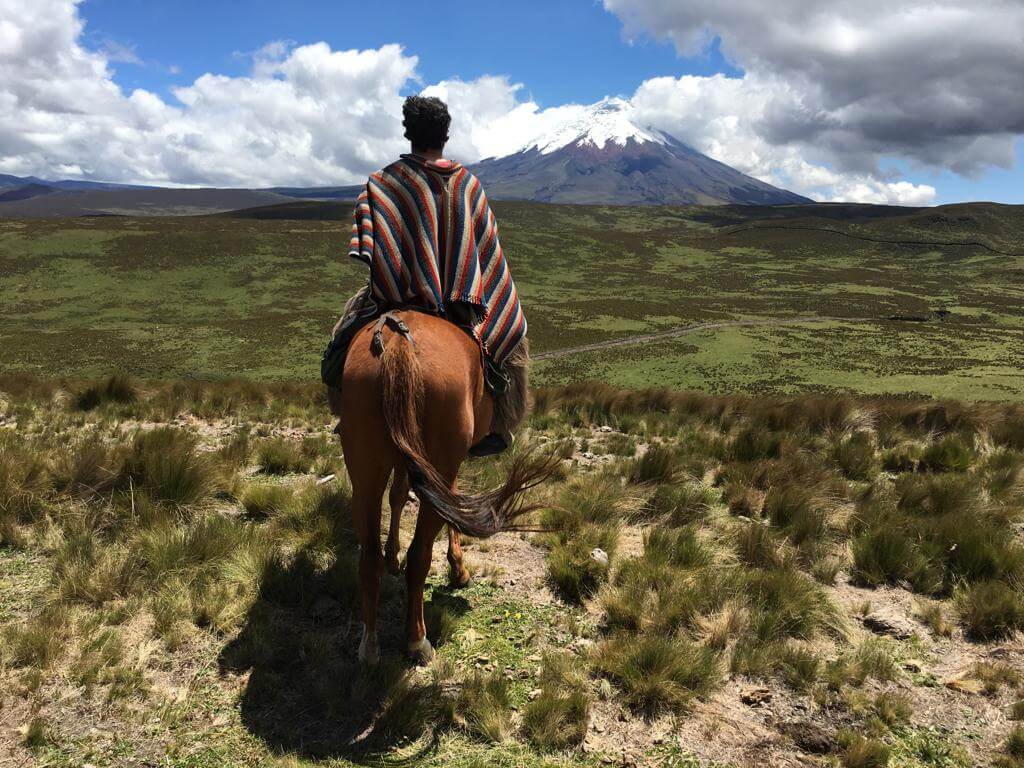In our current globalized world, tourism has peaked and sustainable travel is becoming increasingly important. Sustainable travel is more likely to ensure that the places we visit aren’t negatively impacted and are kept intact for those that live there and those that will pass through after you.
In the same way, we are each becoming more conscious of the way we live and consume on a daily basis, we should also consider our impact on the environment and local population when we travel abroad. Ultimately, we’re all relying on the same resource.
What is sustainable travel?
Sustainable travel is essentially conscious tourism, also called ecotourism. It considers the long-term impacts of tourism on the environment and local communities and strives to mitigate any negative impacts outsiders might have on the place they’re visiting. Ideally, tourism should actually benefit the destination in question.
Sustainable practices can be applied by everyone, including the local government and businesses that cater to tourists in a given destination, as well as the tourists themselves. To ensure sustainability, the local government and businesses are responsible for offering sustainable options and infrastructure. They should be prioritizing the environment and local communities as well as their own business. Over the long term, protecting these areas is in the best interest of their own business!
In the following blog we’ll cover ways that you, as a tourist, can be a more sustainable traveler by making simple choices during your travels.
Five Ways to Be a More Sustainable Traveler
Honestly, there are HUNDREDS of tips out there about sustainable travel. There are so many it starts to get overwhelming and we know the feeling, so here are just 5 of our favorites.
Travel local
I know what you’re thinking, why are we encouraging you NOT to come to Ecuador? Simply because staying local and reducing travel distances are the best ways you can decrease greenhouse emissions caused by air travel.
Even travelling nationally by plane is an issue. Did you know that, according to this NYTimes article, a round-trip flight from New York to California will generate 20% of the greenhouse gases that your car emits OVER ONE YEAR? One flight. One year. Plane vs car.
Taking that into account, think about the impact of an international flight, whether to Ecuador, Italy or Indonesia. It really doesn’t matter how conscious of a consumer you are on a day to day basis if you travel a lot by plane.
Guilt trips (no carbon footprint!) aside, people will be traveling internationally regardless of the environmental cost. Travel is in our genes and now that it’s easier than ever, it’s going to happen despite incessant warnings about climate change.
Support local businesses and the local economy
Ecuador is incredibly rich in culture and, while many travelers appreciate that, the majority are here to experience the country’s incredible natural landscape and observe wild animals they’ve never seen before. This is arguable, but most likely true.
The point is travelers invest in a trip to Ecuador to appreciate what it has to offer that can’t be experienced in their own countries. When they arrive here, they invest in the local economy by staying at local hostels, eating at the restaurants and going on tours led by local guides. The local population is able to sustain themselves and their families and are encouraged to conserve their natural environment, which is what attracts visitors in the first place.
What happens when you stop investing in local businesses and instead organize everything through international tour agencies, hotel and restaurant chains? The incentive for locals to protect their land and animals disappears.
What does supporting the local economy look like? In Ecuador, it means traveling by bus, eating at local spots, hiring local tour guides, buying fruit from street vendors, tipping generously, buying coconuts on the beach from the guy with the machete. There are endless ways you can support the local community without compromising your travel experience.
Opt for sustainable activities
One important goal to sustainable travel is making choices that will help conserve the place you’re visiting. Ecuadorians are already grappling with air, water, and noise pollution and they don’t need tourists to come in and make things any worse, thank you. When you’re choosing between activities during your trip here, choose the ones that won’t have an effect on the area.
For instance, rather than deep-sea fishing, which relies on a lot of fuel, pollutes the ocean, depletes fisheries and harms animals, consider snorkeling, surfing, or sea kayaking. Instead of dirt biking through the country for that adrenaline kick, go to Baños and jump off a bridge! That should do it. I mean, jump off a bridge with a bungee cord attached, of course.
There are so many activities you can do that won’t disturb the natural environment, such as multi-day treks through the Andes, white water river rafting, mountain biking around Cotopaxi, or birdwatching in Mindo.
Reduce plastic waste
Along the same lines as the previous section, Ecuador doesn’t need any more plastic in its rivers, ocean, and trails. Limiting the use of plastic is high on the agenda for conservationists and conscious consumers in this country, yet stores and supermarkets continue to use plastic bags quite generously.
As a visitor, you can help local stores and businesses reduce their reliance on plastic. Instead of accepting the plastic bag for your break, bring a lightweight reusable bag, or simply use one plastic bag over and over again for all your shopping. As Ecuador moves toward a more sustainable way of life, this simple act has a greater impact than you might think.
Limit energy use and conserve water
As at home, be conscious of how much water and energy you’re consuming. Many regions of Ecuador face water shortages. In the province of Esmeraldas, the local population deals with regular water cuts and folks have learned to keep an extra bucket on hand. Wherever you might be, always try to take showers instead of baths and short ones at that.
Similarly, power cuts are frequent across the country, though not usually in the bigger cities. More hostels and lodges are installing solar panels as a sustainable approach to powering their facilities. This means they rely on batteries that have charged over the day. Try to be conscious of leaving the lights on, using washers and dryers and the excessive use of air conditioning.
Sustainable Travel on a Budget
Most people believe that sustainable travel requires a large budget. While top lodges in the Amazon and other areas of the country are often ecolodges, and quite expensive ones at that, there are many ways to participate in sustainable travel without breaking the bank.
One of the best ways to travel sustainably in Ecuador, and elsewhere, is to be informed on the sustainability issues local populations face. These are different in every country, region, and city. Research conservation issues prior to traveling and depending on your selected destinations.
If this is a topic you feel passionate about, ask locals about the best ways to travel sustainably. You’ll likely get a number of context-specific tips, as well as affordable ecolodge recommendations that may not have been among your top Google results.
Another great way to travel sustainably in Ecuador on a budget is to take the bus! Buses here are incredibly cheap and will take you to even the hardest to reach corners of the country. If you’re turned off by the departure/arrival times and safety issues both on the bus and at bus terminals (unfortunately, there are many), consider the Wanderbus.
Though more expensive than the regular buses, the Wanderbus ensures safety and is incredibly convenient. It’ll pick you up and drop you off in convenient locations at reasonable hours, provide hostel and restaurant recommendations and also provides a bilingual guide along all its routes. Make sure to check out our passes to see if they might fit with your itinerary.
Sustainable travel in Ecuador — ideas and inspiration
Looking for some sustainable travel options for your trip to Ecuador? Here are a few of our favorite ecolodges and activities:
The Secret Garden and horseback riding in Cotopaxi National Park
The Secret Garden is a lovely hostel near Cotopaxi Volcano. The accommodations have all been built from locally sourced, natural materials and daily activities will keep you occupied during your entire stay. Upon arrival, you get a sense of the communal feel of the place and though the prices may seem steep at first, make sure to review what is included, it’s all quite affordable when you look more closely.
Camping Expedition in Yasuní National Park
After watching a few episodes of Naked and Afraid, everyone wants to take a stab at surviving in the jungle, right? Though not quite the same, Amazon Camping Expeditions, led by Fausto Andi takes you deep into one of the most biodiverse areas on earth where you’ll experience the rainforest, its tributaries and wildlife firsthand on multi-day camping adventures. He even takes travelers 1,000 km by canoe all the way to Iquitos, Perú if that’s of any interest!
Quilotoa Loop stopping through the Black Sheep Inn
If you enjoy multi-day treks but prefer not to carry a backpack full of gear, you should consider doing the Quilotoa Loop. This 2-4 day hike takes you through Andean villages in the Quilotoa area, after visiting the incredibly Quilotoa crater lake. At each village, you’ll find simple guest houses offering beds and food. In one of these, Chugchilán, you can stay at the Black Sheep Inn, one of the coziest ecolodges in the region.
If you want even more sustainable options in Ecuador, make sure to read our blog on the top ecotourism destinations in Ecuador.






